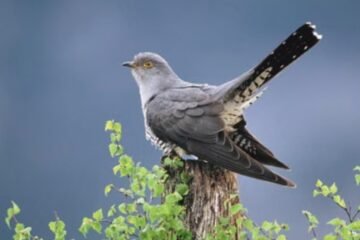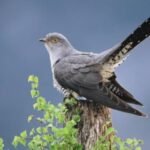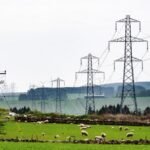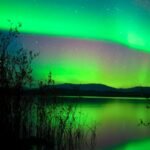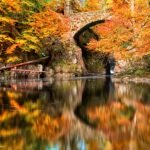Scots across the country might catch a glimpse of the Northern Lights tonight as a strong geomagnetic storm brings the aurora closer to Earth. Meteorologists predict good chances for visibility in northern areas, with clear skies boosting the odds after recent solar activity peaked over the weekend.
The display follows a coronal mass ejection from the sun that hit Earth earlier this week, lighting up the skies with greens, purples, and reds. This event ties into the solar maximum of 2025, making such sightings more common than in quieter years.
What Sparks This Stunning Sky Show
The Northern Lights, or Aurora Borealis, happen when charged particles from the sun slam into Earth’s magnetic field and atmosphere. These solar winds travel millions of miles and create colorful curtains in the polar regions.
Experts note that October often brings strong aurora activity due to equinox effects, when Earth’s tilt aligns better with solar ejections. Recent data shows a massive coronal hole on the sun’s surface fueled storms from October 11 through today, extending visibility south from usual Arctic spots.
In Scotland, past events like the vivid displays in May and September 2025 drew crowds to remote highlands. This week’s surge mirrors those, with forecasts indicating potential views as far south as central regions if conditions hold.
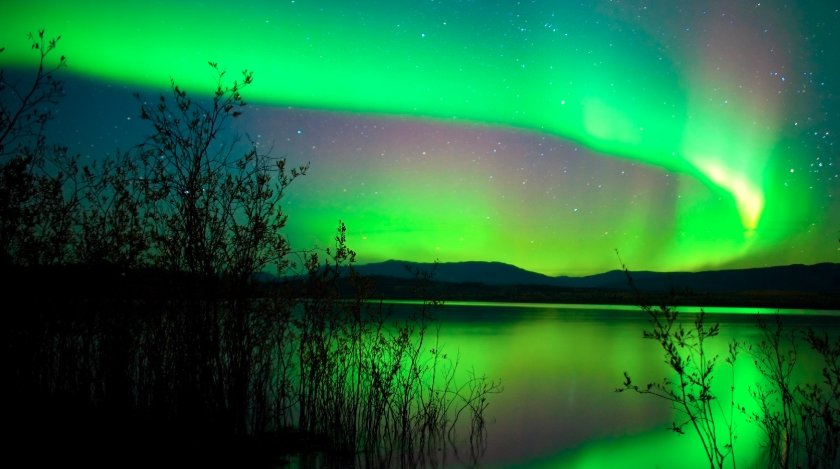
Prime Spots for Viewing in Scotland
Scotland’s dark skies and northern latitude make it a top UK destination for aurora hunting. Head to areas with low light pollution for the best shot, especially tonight around 9pm to midnight when activity peaks.
Popular sites include the Scottish Highlands, where open landscapes offer unobstructed northern views. Coastal spots along the Moray Firth also shine, as the sea provides a reflective foreground for the lights.
To maximize your chances, check local weather apps for cloud cover. Recent sightings reported faint glows in Edinburgh last night, hinting at broader potential tonight.
Here are key locations with tips:
- Isle of Skye: Remote and dark, ideal for full displays. Drive to the Quiraing for elevation.
- Galloway Forest Park: UK’s first Dark Sky Park, perfect for southern viewers. Camp out for extended watching.
- Aberdeenshire Coast: Beaches like those near Peterhead face north directly. Avoid urban glow from nearby towns.
- ** Cairngorms National Park**: High altitudes cut through haze. Trails like those around Aviemore work well.
How to Spot the Northern Lights Effectively
Spotting the aurora requires patience and the right setup, but tonight’s forecast gives enthusiasts a solid window. Look north after dark, letting your eyes adjust for 20 to 30 minutes without phone screens.
The lights often start as a faint green arc, building to dancing waves if the storm intensifies. Geomagnetic indices predict Kp levels of 5 to 7 tonight, meaning moderate to strong activity visible overhead in Scotland.
Factors like moonlight can dim the show, but with a waning gibbous phase, conditions favor clearer views. Tie this to trending solar news: A similar storm last week lit up skies in Norway, spilling over to UK borders.
For real time updates, apps like Aurora Watch track activity. Recent social buzz from last night’s partial sightings in the Highlands has locals excited for round two.
| Time Slot | Expected Visibility Level | Best Regions in Scotland |
|---|---|---|
| 8pm – 9pm | Low to Moderate | Northern Isles (Shetland, Orkney) |
| 9pm – 11pm | High | Highlands, Aberdeenshire |
| 11pm – 1am | Moderate | Central Belt if clear |
| After 1am | Fading | Southern areas unlikely |
Tips for Capturing the Perfect Aurora Photo
Photographing the Northern Lights turns a fleeting sight into lasting memories, and modern cameras make it easier than ever. Use a tripod for stability, as long exposures capture colors invisible to the naked eye.
Set your camera to manual mode with ISO 800 to 3200, shutter speed of 5 to 15 seconds, and wide aperture like f/2.8. Smartphones work too: Enable night mode and prop on a steady surface for 10 second shots.
Practice in advance, as the aurora moves fast during peaks. Recent tips from photographers highlight composing with foregrounds like lochs or castles for dramatic effect, as seen in viral images from Loch Lomond last month.
Battery life drops in cold, so pack extras. Post processing apps can enhance greens without over editing, keeping the natural wonder intact.
This geomagnetic event underscores 2025’s active sun, linking to broader climate studies on space weather impacts. With clear forecasts, tonight could rival the best displays of the year.
Share your Northern Lights photos in the comments below and tag friends to join the sky watch. What spots will you try?


